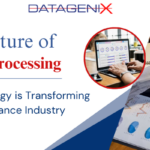Claims Software Systems: The Future of Smart Claims Handling
April 23, 2025
As we approach the year 2025, the landscape of claims processing software is poised for significant transformation, driven by emerging technologies, shifting consumer expectations, and evolving regulatory requirements. In this article, we’ll explore the latest trends shaping the future of claims processing software and how insurers can leverage these advancements to streamline operations, enhance customer experiences, and stay ahead of the curve.
1. AI-Powered Automation
Artificial intelligence (AI) continues to play a pivotal role in revolutionizing claims processing software. In 2025, we can expect to see a proliferation of AI-powered automation solutions that streamline workflows, reduce manual intervention, and improve efficiency throughout the claims lifecycle. AI algorithms will automate routine tasks such as data entry, document processing, and claims triaging, enabling insurers to process claims faster, minimize errors, and allocate resources more effectively.
2. Predictive Analytics for Risk Assessment
Predictive analytics will become increasingly integral to claims processing software, enabling insurers to assess risk more accurately, set appropriate premiums, and proactively manage their exposure to losses. By analyzing historical claims data, market trends, and customer behavior, predictive analytics algorithms will forecast future claim frequencies, severities, and trends, empowering insurers to anticipate risks, mitigate losses, and optimize claims processes for better business outcomes.
3. Natural Language Processing (NLP) for Document Understanding
Natural language processing (NLP) technologies will enable claims processing software to understand and extract information from unstructured text data, such as claim notes, emails, and customer correspondence. By analyzing large volumes of textual data efficiently, NLP algorithms will identify key insights, detect patterns, and make data-driven decisions, leading to improved accuracy, faster processing times, and enhanced decision-making in claims processing.
4. Advanced Image Recognition and Computer Vision
Advanced image recognition and computer vision technologies will empower claims processing software to analyze and interpret visual data, such as photos, videos, and scanned documents. By automatically assessing property damage, vehicle accidents, and other visual evidence, image recognition algorithms will accelerate claims processing times, improve accuracy in claims assessment, and enhance the overall efficiency of claims processing workflows.
5. Blockchain for Secure Data Management
Blockchain technology will play a crucial role in ensuring secure and transparent data management in claims processing software. By leveraging blockchain’s immutable ledger and cryptographic features, insurers can securely record and verify claims data, transactions, and communications, reducing the risk of fraud, enhancing data integrity, and improving trust and transparency in the claims process.
6. Enhanced Customer Engagement and Self-Service Options
In 2025, claims processing software will prioritize enhanced customer engagement and self-service options, enabling policyholders to file claims, track their status, and communicate with insurers seamlessly across multiple channels. By offering intuitive self-service portals, mobile apps, and omnichannel communication capabilities, insurers will improve customer satisfaction, loyalty, and retention, while reducing administrative overhead and operational costs.
7. Integration with IoT Devices and Telematics Data
The integration of claims processing software with Internet of Things (IoT) devices and telematics data will enable insurers to leverage real-time data from connected devices, such as smart home sensors, wearable devices, and telematics devices in vehicles. By analyzing IoT data streams, insurers can proactively detect and mitigate risks, offer personalized risk mitigation services, and expedite claims processing for policyholders, leading to improved customer experiences and reduced claims costs.
8. Regulatory Compliance and Data Privacy
In 2025, claims processing software will prioritize regulatory compliance and data privacy, as insurers navigate increasingly stringent regulations and privacy requirements. By implementing robust data protection measures, encryption protocols, and compliance frameworks, insurers will ensure the security and privacy of sensitive claims data, while maintaining compliance with regulations such as GDPR, HIPAA, and CCPA.
Conclusion
As we look ahead to 2025, the future of claims processing software is bright, with advancements in AI, predictive analytics, NLP, blockchain, IoT, and customer engagement reshaping the way insurers manage claims. By embracing these emerging technologies and trends, insurers can streamline operations, enhance customer experiences, and drive innovation in claims processing software, positioning themselves for success in an increasingly digital and competitive insurance landscape.
How Health Claims Management Software Transforming The Industry?
February 7, 2025How Claims Software Can Transform Your Claims Process?
January 29, 2025The Need For Healthcare Claims Management Software
January 13, 2025Reasons You Should Invest in Claims Management Software
January 7, 2025The Essential Guide To TPA Software Features & Benefits
December 24, 2024Claims Management Software: Key To Streamlining Your Business
December 18, 2024How TPA Software Solutions Transformed Medical Claims Management?
November 20, 2024









